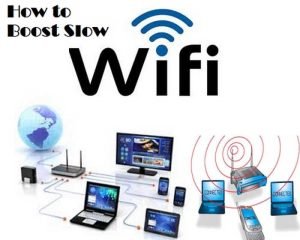Importance, risks, types and uses of Wi-Fi technology
Wi-Fi is wireless LAN, It is one of the important technologies of computer networking, It allows the users to connect to the internet technology without wires, It allows the router to be cordless also, The network is connected through an access point for the internet and it is connected to a USB Port.
Wi-Fi technology
Wi-Fi is a wireless technology used to connect computers, tablets, smartphones, and other devices to the internet, It is the radio signal sent from a wireless router to a nearby device, which translates the signal into data you can see and use, The device transmits a radio signal back to the router, which connects to the internet by wire or cable.
Wi-Fi is used for different purposes such as data transmission and wireless communication, using a Wi-Fi connection whenever possible will most often result in faster, more reliable internet access, and it is cheap. Wi-Fi allows wireless connection for up to 20 meters, It is also known as Internet Routers, You no longer need cords or internet connections, and it is cordless.
Wi-Fi is a mode of wireless technology that uses radio waves for its data transmission, It is easy to install and use, Many companies place wireless LAN cards on their desktops before selling them to their customers. WiFi network is established by installing a Wi-Fi AP (Access Point) or wifi router, The wifi router or AP is connected to the internet using a physical or wired ethernet cable or fiber optic cable, and WiFi stands for Wireless Fidelity.
Wi-Fi is used for free at restaurants or coffee houses, It sends out Data to LAN and WAN networks and these networks allow any connection without using cords, You can take your laptop wherever you want with the option of having a wireless connection with the help of the routers and the adapters.
Hot spots are connected through Wi-Fi, The cell phone companies are supported by GSM, Which allows people to always stay connected through Wi-Fi, So it can be used for emergencies.
Wi-Fi is already connecting the Internet to every application that consumers want today, It is enabled for thermostats, light bulbs, home security, monitoring and control systems, appliances, and automotive products.
Wi-Fi is a single technology that can help make all connections seamless, Wi-Fi applications with practical uses will have success, It has industry-standard security protections, and that consumers can rely on.
Wi-Fi network using WPA2™ which provides both security (you can control who connects), and privacy (the transmissions can’t be read by others) for communications as they travel across your network, and for maximum security, your network should include only devices with the latest in security technology.
WiFi network allows connection between two or more devices wirelessly for data sharing purposes, It is a simple and cost-effective way to connect with a wifi router or with other wifi devices wirelessly without the need for wires, WiFi network uses radio frequency for their operation in the 2.4 GHz or 5.8 GHz bands, It is based on WLAN as defined in IEEE 802.11 series standards.
Types of Wi-Fi connections
Wireline/router: Most homes use a wireless router to access the internet these days, It offers the convenience of setup and mobility within range of the Wi-Fi access point (router) and it can connect multiple devices, but it has limited bandwidth.
Mobile hotspot or jetpack: Mobile hotspots become a more popular way of connecting safely on the go, Two common hotspot devices are your smartphone and a jetpack, Most smartphones or tablets can be used as a temporary hotspot and are a great option if you occasionally need it.
LTE Home Internet: When you live in a rural area where your internet options are limited, 4G LTE Home Internet is worth considering, It offers high-speed internet service delivered over cell phone towers and mobile networks, The pros of LTE over satellite are better speeds and reliability depending on your carrier.
5G Home Internet: 5G Home Internet is Fixed Wireless Access, It is in more places around the country, and even with multiple devices connected, it’s reliable and fast enough to power your whole home, Fixed wireless access has a simple plug-and-play setup, which means there are no messy wires and no need to wait for a technician to come to your home for setup.
Advantages of Wi-Fi
You can add or move wifi clients or wifi stations to the wifi network created by AP (Access Point), Installation is very easy, It does not require technical knowledge of wifi or WLAN system and its protocols, Access to the wifi network can be availed from anywhere within the wifi AP (Access point) coverage range, WiFi allowed USB dongles are available at very affordable rates.
The latest wifi standard versions such as 11n and 11ac deliver fast data connection rates e.g. 300 Mbps and higher, It is easy to integrate wifi in mobile computing devices, it is used by millions of people using various devices such as PCs, laptops, PDAs, Printers, Cameras, Games, MP3 players, smartphones etc.
Wi-Fi provides a convenient and cost-effective way to connect to the internet wirelessly. Wi-Fi lets you connect to the internet from almost anywhere within the network’s range, giving you freedom of movement and eliminating the hassle of cables.
Setting up a Wi-Fi network is cheaper than installing wired connections for all your devices. Wi-Fi doesn’t require complex installations. You won’t need to spend money on extensive cables, and most devices nowadays come Wi-Fi-ready.
Wi-Fi eliminates the need for pesky cables, allowing you to connect to the internet from any spot within the network’s range. This makes it perfect for mobile devices like laptops, tablets, and smartphones and provides more freedom for setting up devices in your home or office.
Public Wi-Fi is widely available in many places like coffee shops, libraries, restaurants, and airports, providing convenient internet access on the go. Setting up a Wi-Fi network is cheaper than installing wired connections for every device. You just need a router and a subscription to an internet service provider (ISP).
Wi-Fi networks are relatively easy to set up, especially for with modern routers that have user-friendly interfaces at home. Adding new devices to an existing Wi-Fi network is usually straightforward.
Disadvantages of Wi-Fi
The data transfer rate reduces (to individual computers) when the number of clients or computers connected with a Wi-Fi network increases, Full security is difficult to achieve due to the wifi connection being wireless, It requires proper security authentication protocols and configurations, Wifi devices can operate in full functionality and without any interruptions when they are within the range of AP and receiving good signal strength.
In case of wifi connection does not work, minimal troubleshooting is needed, This requires one to understand the basics of the wifi device from the user manual provided by the manufacturer, Before using wifi device, you need to install software from the CD provided by the manufacturer in the desktop or laptop.
Since Wi-Fi signals are transmitted wirelessly, they can be intercepted by unauthorized users if proper security measures aren’t taken, making your devices vulnerable to hacking, and less secure than wired connections. Hackers can intercept data if the network isn’t properly secured with strong passwords and encryption protocols to protect your network.
The strength of a Wi-Fi signal weakens as you move farther away from the router or access point, potentially leading to slow speeds or dropped connections. Walls and other obstacles can also interfere with the signal. This can lead to slower speeds or dropped connections in areas far from the router.
Wi-Fi speeds can be slower than wired ethernet connections, especially when multiple devices are using the network at the same time or if there’s interference. While Wi-Fi speeds have improved significantly, wired connections offer faster and more stable internet compared to Wi-Fi.
Wi-Fi signals can be affected by interference from other electronic devices or crowded Wi-Fi networks in the area, causing connection slowdowns. Wi-Fi connections can be unreliable, with signal dropouts or slowdowns depending on various factors like network congestion or interference from other devices.
You can subscribe to Science Online on YouTube from this link: Science Online
You can download Science Online application on Google Play from this link: Science Online Apps on Google Play
What is a MiFi?, Portable Wi-Fi hotspot, Mi-Fi devices advantages and disadvantages
Wi-Fi health dangers and the radiation health effects of routers at home
Mobile Wi-Fi Hotspot features, types, uses, and advantages
Wi-Fi Direct uses, advantages, and disadvantages





Good